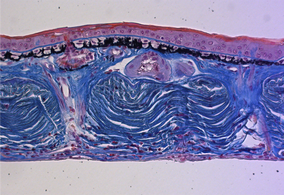Research Interests

Small mammal functional diversity
The Pleistocene (Ice Age) was characterised in part by a complete restructuring of mammal communities. While small mammal taxonomic diversity remained relatively unchanged compared to the near complete loss of mammalian megafauna, it remains less clear how functional dimensions of small mammal diversity changed over this time period. In my postdoc at Ohio State, I investigated how functional diversity of small mammal communities changed over time using cave deposits across North America and also in Europe. I am also started investigating the effects of taxonomic resolution on functional and taxonomic diversity trends and am continuing this work in collaboration with Dr. Marta Jarzyna.
Australian amphibian biogeography
As with many organisms in Australia, most of the ~240 amphibian species exist nowhere else in the world. Despite global concern for their conservation after the spread of the deadly amphibian chytrid fungus, relatively little is known about amphibian species abundance, biogeography, and contribution to ecosystem processes. To address these knowledge gaps, I am working to reconstruct how amphibian communities are structured across Australia using online records from the Atlas of Living Australia. The focus of this research is on not only how species are distributed across space but also the functional traits of these species. This project also seeks to predict the effects of future species loss if conservation measures fail to protect species listed as threatened by the IUCN. This research was the basis for my Endeavour Postdoctoral Research Fellowship at Macquarie University with Dr. John Alroy and is currently being written up for publication.
Amphibian skin morphology
Amphibians are considered the most sensitive group of terrestrial vertebrates because of their semi-permeable skin. This functionality of the skin is such an integral part to amphibian biology that it is often implicated in the relatively high proportion of amphibians threatened with extinction around the world. In my PhD, I quantified how sources of variation affected skin thickness, focusing on sex, seasonality, and body size. While body size explains much of the variation in skin thickness, seasonal effects can obscure this patterns. The first paper of this work is published (open access!) in the Zoological Journal of the Linnean Society, and the next paper is being prepared.
Previously, I also researched the evolution and function of nonpathological vertebral fusion (MSc, University of Toronto) and forelimb rotational ability in dinosaurs (BSc, Western Illinois University). For more information on the products of these research projects, see my Publications page.
The Pleistocene (Ice Age) was characterised in part by a complete restructuring of mammal communities. While small mammal taxonomic diversity remained relatively unchanged compared to the near complete loss of mammalian megafauna, it remains less clear how functional dimensions of small mammal diversity changed over this time period. In my postdoc at Ohio State, I investigated how functional diversity of small mammal communities changed over time using cave deposits across North America and also in Europe. I am also started investigating the effects of taxonomic resolution on functional and taxonomic diversity trends and am continuing this work in collaboration with Dr. Marta Jarzyna.
Australian amphibian biogeography
As with many organisms in Australia, most of the ~240 amphibian species exist nowhere else in the world. Despite global concern for their conservation after the spread of the deadly amphibian chytrid fungus, relatively little is known about amphibian species abundance, biogeography, and contribution to ecosystem processes. To address these knowledge gaps, I am working to reconstruct how amphibian communities are structured across Australia using online records from the Atlas of Living Australia. The focus of this research is on not only how species are distributed across space but also the functional traits of these species. This project also seeks to predict the effects of future species loss if conservation measures fail to protect species listed as threatened by the IUCN. This research was the basis for my Endeavour Postdoctoral Research Fellowship at Macquarie University with Dr. John Alroy and is currently being written up for publication.
Amphibian skin morphology
Amphibians are considered the most sensitive group of terrestrial vertebrates because of their semi-permeable skin. This functionality of the skin is such an integral part to amphibian biology that it is often implicated in the relatively high proportion of amphibians threatened with extinction around the world. In my PhD, I quantified how sources of variation affected skin thickness, focusing on sex, seasonality, and body size. While body size explains much of the variation in skin thickness, seasonal effects can obscure this patterns. The first paper of this work is published (open access!) in the Zoological Journal of the Linnean Society, and the next paper is being prepared.
Previously, I also researched the evolution and function of nonpathological vertebral fusion (MSc, University of Toronto) and forelimb rotational ability in dinosaurs (BSc, Western Illinois University). For more information on the products of these research projects, see my Publications page.
